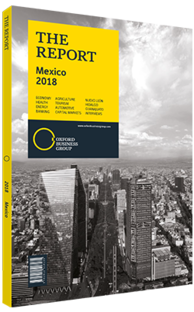David Calderón Martín del Campo, President, Mexicanos Primero: Interview

Interview: David Calderón Martín del Campo
What areas need to be addressed to improve Mexico’s educational standing among OECD countries?
DAVID CALDERÓN MARTÍN: Recent reforms have made essential changes to our educational system, but there are still areas that require improvement. To further develop the educational system Mexico needs to focus on low performers. By focusing on the bottom of the educational pyramid the average student performance level can be raised. Such a measure may seem like a simple initiative but this is the same fundamental step taken years ago by countries such as Vietnam, South Korea and Finland. Their current standings in the OECD Programme for International Student Assessment test results proves this simple strategy’s ability to improve performance.
A second strategy to improve our ranking involves the participation of families. Successful educational systems make the interaction between students, teachers and families an essential part of learning. Greater performance can be achieved when there is active and positive participation between families and schools. Such an initiative has not yet been developed, and it is likely to be one of our greatest challenges to implement.
How is the government trying to enhance infrastructure levels in order to offer improved educational conditions for Mexican students?
CALDERÓN: More investment and planning decision power has been transferred directly to schools. School management teams now have a budget to invest directly in their school’s unique infrastructural needs.
Since the structural educational reform was passed in 2013 more than 24,000 schools have benefitted from this initiative of direct investment. In addition, from 2016 more than 33,000 schools took advantage of the financial markets to finance investments in their infrastructure. This initiative is called “Schools to 100” in which the federal government has issued a bond on a percentage of the next 25 years of future transfers towards the states. This allows them to raise the capital required for needed improvements in the present. The capital raise was invested in five main areas: improving bathrooms, bringing potable water to drinking fountains, creating new libraries, establishing new labs and increasing available space for sports facilities. Improvements to school infrastructure is fundamental to enhancing health and safety, in addition to their impact on student learning.
What initiatives are being taken to reduce the quality gap between public and private education?
CALDERÓN: Since the reform, initiatives to reduce the gap between private and public schools have been actively promoted. The first initiative is the second language requirement in public schools. Previously, public schools had failed to successfully achieve the integration of a second language in their syllabi. However, since the implementation of the reform public schools are now offering classes in other languages to students from the age of five and older.
The second initiative encourages the use of technology throughout public schools. We must give credit to private schools because they have understood that technology must be integrated into each and every step of learning. On the other hand, regardless of the strong efforts that public schools have made in an attempt to integrate the use of technology in their classrooms, resources have been very limited, with few computers and tablets available for all students. Lastly, there is an increasing importance private schools are giving to classes that is serving to further the progress of creativity and teamwork among students. Private schools have commonly promoted physical education and artistic activities, such as team sports and musical orchestras, while public schools have not yet had the initiative or the resources to implement such activities. These activities and initiatives are increasingly important as public schools work to improve teamwork skills among students while stimulating their creativity.
You have reached the limit of premium articles you can view for free.
Choose from the options below to purchase print or digital editions of our Reports. You can also purchase a website subscription giving you unlimited access to all of our Reports online for 12 months.
If you have already purchased this Report or have a website subscription, please login to continue.

